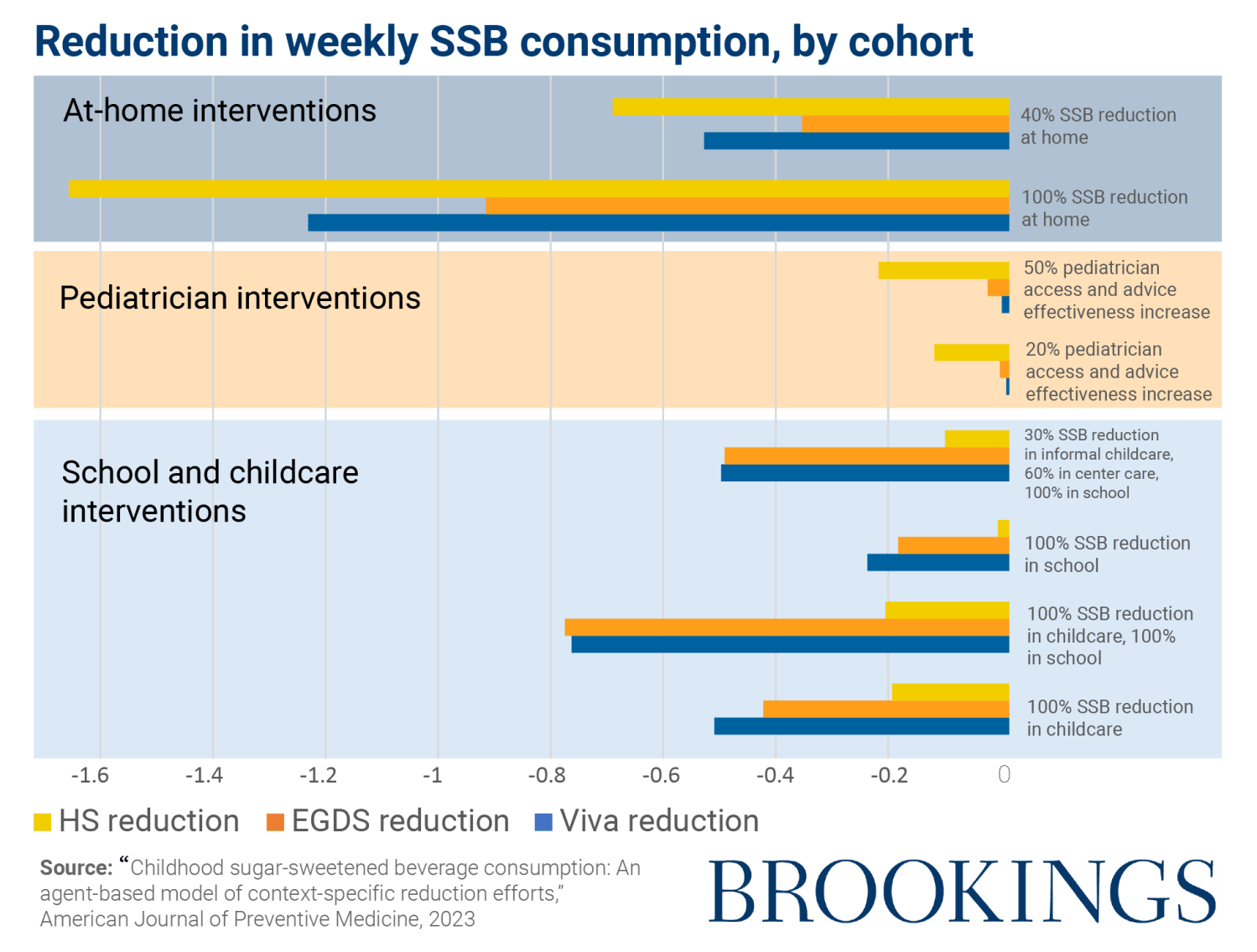Childhood consumption of sugar-sweetened beverages (SSBs) including sodas, fruit drinks, and sports drinks is linked to numerous negative near- and long-term health outcomes. Despite widespread recognition among public health experts that childhood SSB consumption should be reduced, doing so has proven to be a challenge. In a study from October 2022, we developed an agent-based model (ABM) to evaluate intervention efforts in different settings – childcare, schools, and at home. This research showed that reduction of access to SSBs in the home was the most promising context for intervention, reducing consumption by as much as 60%.
In a new study published in the American Journal of Preventive Medicine, we replicated our previous research high-quality, longitudinal data from multiple cohorts of children from varied populations and environments. After verifying that the model was able to reproduce consumption patterns observed in each cohort, it was used it to simulate potential impacts of multiple intervention strategies across contexts.
- Reducing home availability of SSBs consistently led to the largest potential reduction in overall consumption
- A complete decrease in availability of SSBs in the home resulted in an average 67% decrease in overall early childhood consumption across the three cohorts
- Potential intervention impacts can vary considerably across context. For example, reducing availability in center-based childcare resulted in substantially greater reduction in one cohort relative to the other two
-
Acknowledgements and disclosures
Chris Miller assisted with the layout and design of this policy brief.
The Brookings Institution is financed through the support of a diverse array of foundations, corporations, governments, individuals, as well as an endowment. A list of donors can be found in our annual reports published online here. The findings, interpretations, and conclusions in this report are solely those of its author(s) and are not influenced by any donation.
The Brookings Institution is committed to quality, independence, and impact.
We are supported by a diverse array of funders. In line with our values and policies, each Brookings publication represents the sole views of its author(s).






